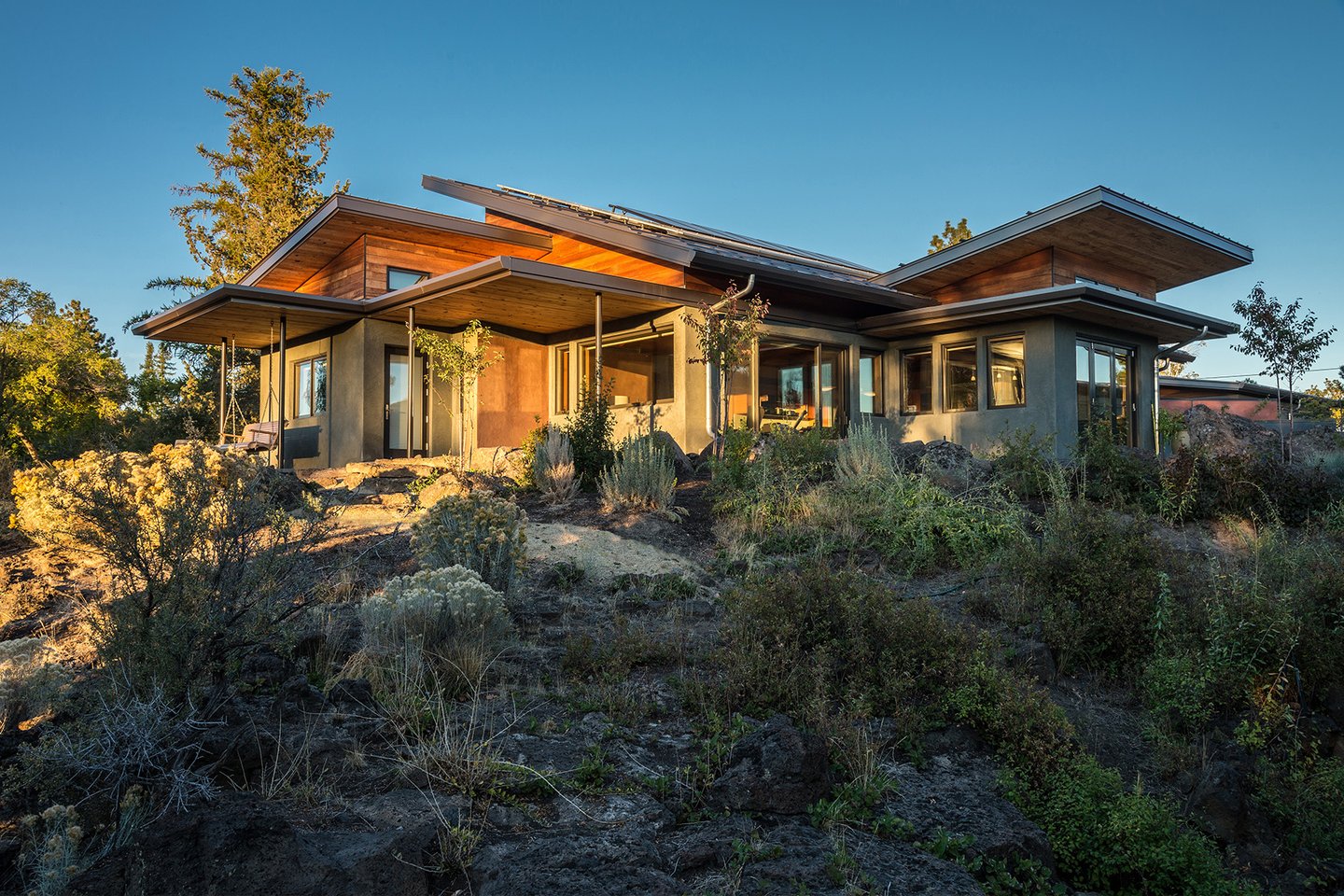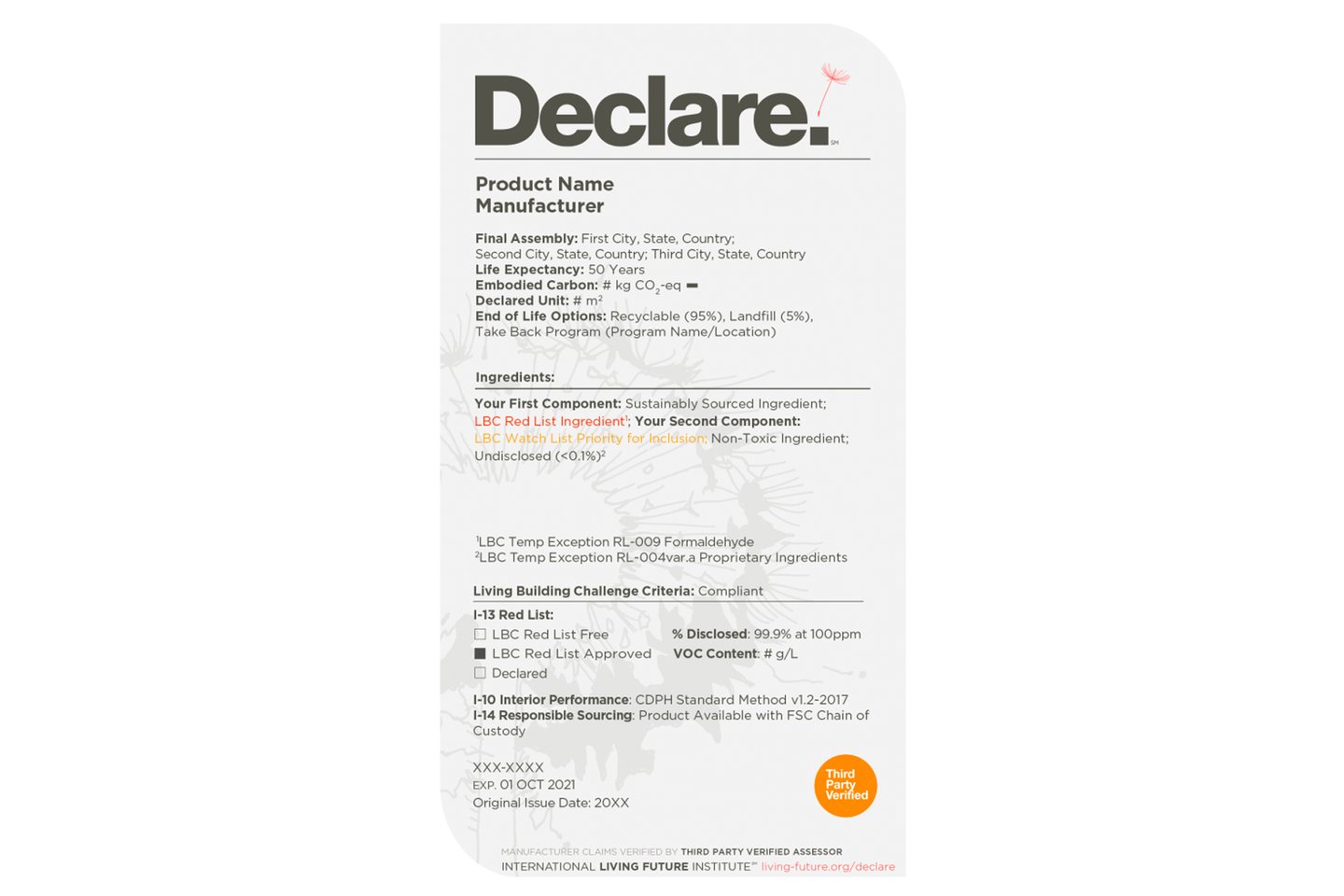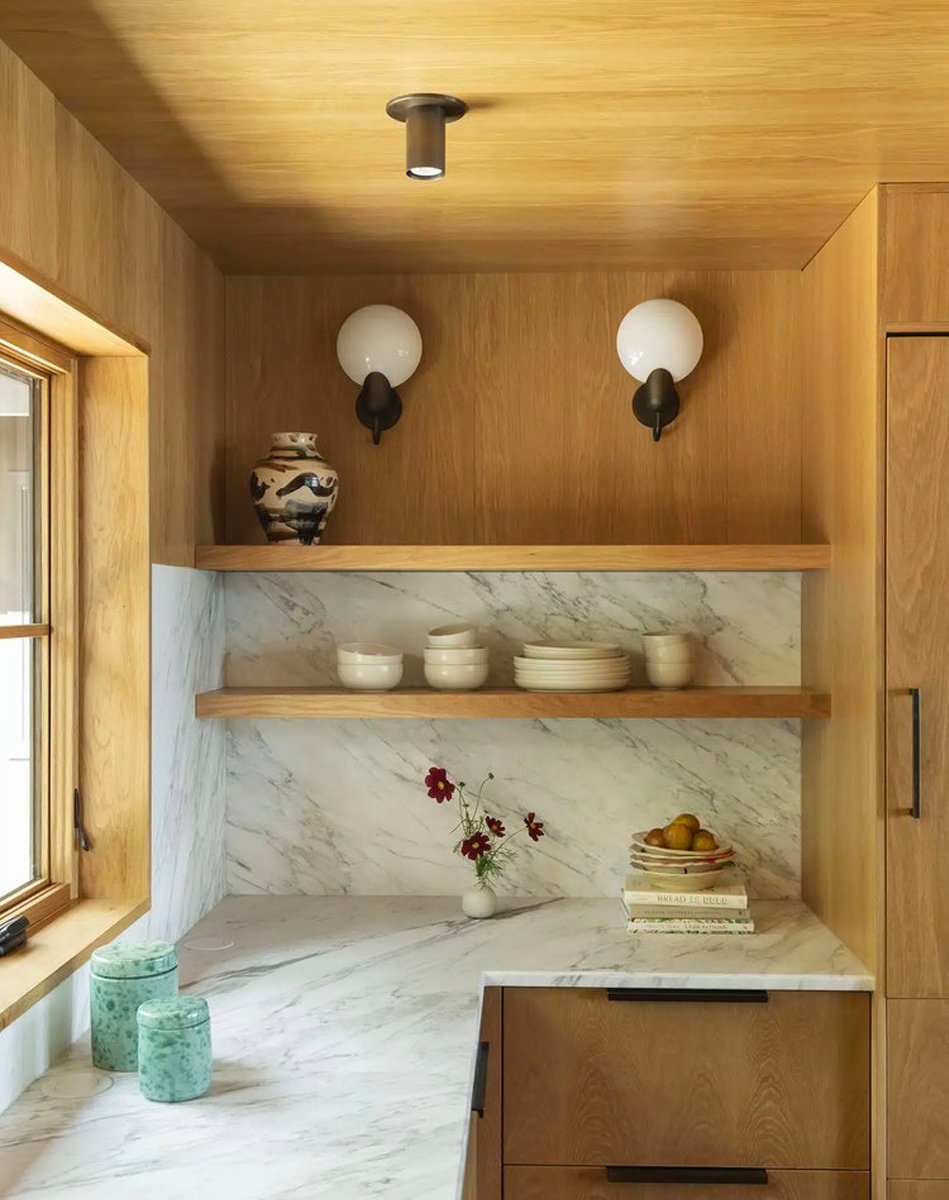
2 min read
Designer's Guide to Green Certifications
A Primer for Healthy Homes and Interiors. Who is gatekeeping wellness and sustainable design? WLLW looks at green certifications in brief.

3 min read
WLLW delves into Declare label and the Red List as the demand for sustainable and healthy products intensifies, alongside the mounting pressure for transparent information for specifiers and consumers.
The International Living Future Institute (ILFI), through its programs, events and research, is a non-profit aiming to foster a regenerative world based on ecological principles and social justice, while combating climate change and advocating for a fossil fuel-free urban environment. As part of its programs, the ILFI provides the Declare label as a transparency platform and product database, outlining the origin of a product, its composition and its life-cycle endpoint.
Declare can be likened to a nutrition label for building products. These labels disclose all intentionally added ingredients, including chemicals and materials present in a building product. Every active Declare label is available on a free, searchable database, aiding architects, designers and homeowners in selecting trusted products that conform to sustainable and healthy building standards such as LEED and WELL Certifications.
A hallmark feature of the Declare label, particularly known in North America, is the Red List. This is a declaration of materials and additives deemed undesirable due to their significant risks to health and the wider ecosystem. Products without any ingredients on the Institute’s Red List receive the Red List Free denotation.
Since the program was launched in 2012, these labels have increasingly grown in popularity as the push for transparency in the building industry and consumer demand for more sustainable and healthier products continues to grow.

Declare labels cover building products, furniture and interior finishes.
Developed by the ILFI, Declare labels detail all the materials and chemicals in a product, along with their potential impact on human health, while specifying the product's assembly location, lifespan, and disposal options.
It employs a color-coded system: green for non-harmful, yellow indicating caution, and red signifying harmful. This certification notably highlights substances on the ILFI's Red List to promote transparency and inform users, ensuring healthier choices in building materials.
The Red List includes 800 unique CAS numbers (a unique identifier given to specific substances by the Chemical Abstracts Service) representing the “worst in class” materials commonly used in the building industry today.
It identifies the most harmful materials and chemicals in the building industry known to significantly impact human health and the environment. The ILFI advocates for phasing out these substances due to their toxicity and detrimental effects. This list emphasizes items whose restriction or elimination could make the most difference.
Products that successfully steer clear of these ingredients not only showcase a commitment to sustainable and healthy construction but also earn the Red List Free distinction.

Declare has an annual evaluation process, meaning they take a full year to research the product. After the review cycle, the products are color-coded accordingly and could be added to the enforceable Red List.
Declare labels necessitate a thorough examination of any product. For a label to be issued, a minimum of 99% ingredient disclosure from the manufacturer is required, while contents are examined at a very granular level – they are disclosed at 100 parts per million.
Finally, optional third-party verification is available for Declare labels, which demonstrates that a third-party assessor reviewed what was provided by the manufacturer, including supply chain, purchasing, ingredient claims and more.



Transparency: The Declare program promotes transparency in the building industry by requiring manufacturers to disclose all of the ingredients in their products.
Reducing Harmful Chemicals: The program encourages manufacturers to eliminate harmful chemicals from their products and supply chains, which can have a positive impact on the environment and human health.
Cost: The cost of obtaining and maintaining a Declare label can be high for manufacturers, particularly for smaller companies or those with more complex supply chains.
Limited Reach: The program may not have a significant impact on the broader building industry if it is not widely adopted by manufacturers and designers.
Complexity: The program's requirements can be complex and time-consuming to navigate, particularly for manufacturers that do not have a strong understanding of sustainability and transparency practices.
Photography: Tim Johnson/Unsplash, International Living Futures Institute, Armadillo, Lekker Home, Anthology Woods

2 min read
A Primer for Healthy Homes and Interiors. Who is gatekeeping wellness and sustainable design? WLLW looks at green certifications in brief.

2 min read
WLLW takes a closer look at the green certification Cradle to Cradle which takes inspiration from the natural world where there is no concept of waste.